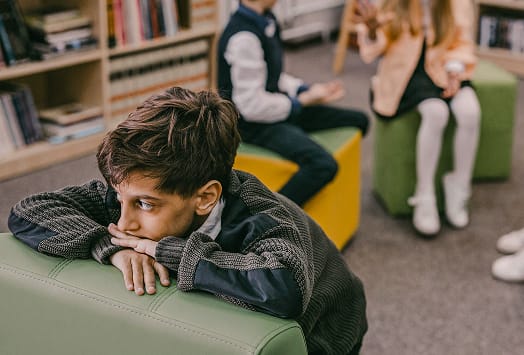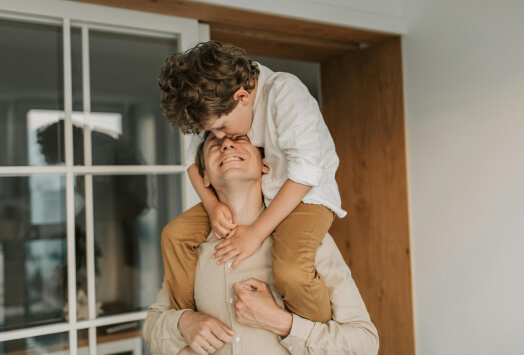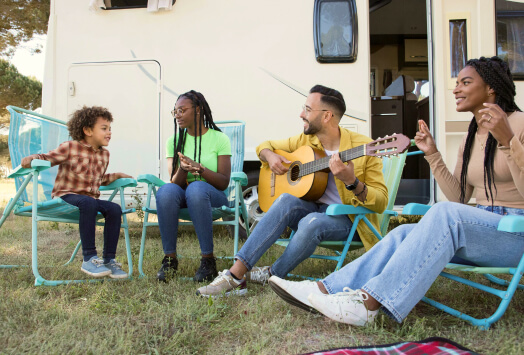Responsibility shouldn’t have to be a burden. Teaching your kids to contribute positively to the world around them by taking responsibility can truly be a fun and fulfilling process that will set them up for success in school, with their friends, and beyond.
We all want our kids to be “responsible,” but what does that look like in action? We love to throw the word around, but how can you help your kids practice responsibility and understand their impact on the world around them?
How do you explain responsibility to a child?
Responsibility can be a little abstract, making it tricky for children to fully wrap their heads around at a young age. Oftentimes, the hardest and most crucial transition for kids to make is from thinking about how their actions affect them and their own feelings to how they impact others. A great way to start these conversations is by letting your child do the thinking. Ask them questions about situations at school or with their siblings; ask how they make them feel and push them to take the perspective of others. The ultimate end goal of raising a responsible child is to have them become independent and sympathetic. By asking questions both before and after different situations and interactions, you will help your child visualize and verbalize the consequences and impact of their actions.
How do I teach my child to be responsible?
One of the best ways to teach is through your own actions. By modeling responsibility and accountability as a parent, you’ll be amazed at how much your child will pick up on. Try to make tasks around the house team projects—anything from brushing your teeth, to wiping down a counter or making a bed can become a collaborative and fun activity for you and your child. Here are some more ideas for developing responsibility at home.
1. Help to build a consistent routine
Kids thrive in routines. Maybe it’s a checklist of things they have to do every night before bed or before school. Maybe it’s a pre-dinner routine every weekday. You can always continue to reinforce routine, and doing so will set your child up to act responsibly and independently within that routine. It’s up to you to determine what parts of your child’s routine that they are ready to take on themselves. As they begin to take more control of their own routines and tasks, they will take pride in them and the transition to independence will be easy.
2. Create a no-blame household
Your child will likely already feel horrible if something has gone wrong. Understand that mistakes are great learning opportunities and use those times not to punish or blame but to ask more questions and help them understand whatever they have done. When you remove blame from the picture, it’s easier to move onto creating solutions. Reinforce ideas of responsibility, rather than jumping to blame, which can only make everyone defensive and more upset.
3. Eliminate the “chore” mindset
With all its connotations, the word “chore” makes everything seem much less fun or appealing than it might actually be. Instead, set goals with your kids and provide as much hand-on help as you need to, in order to set them off on a path of responsibility. Every good habit will start with some oversight on your end, but by maintaining a positive, fun approach to these goals, your child might actually enjoy the process. Update goals over time so that they remain present and don’t go stale. Have your kids track their own progress, too! Colorful charts or journals encouraged! Find a great guide for age-appropriate “chores” here.
How can I help my child take responsibility for their actions?
For kids, responsibility all starts with how they feel about themselves. In fact, children with high-self esteem tend to be more responsible. By feeling loved, they will feel capable of taking control over various parts of their own lives. Show your unconditional love all the time—it turns out showing (and maybe yelling) unconditional love to your child in front of their school isn’t just embarrassing for them, it’s actually helping them feel more responsible! They will even be more likely to sign onto new tasks and give their best effort when faced with challenges.
An important piece of building the right self-esteem and mindset about responsibility is knowing the difference between obedience and responsibility. Simply following all the rules is not necessarily “responsibility.” To help your kids take the next step to understanding and claiming ownership of their actions, give them space to struggle and problem solve without much oversight. Step in when you need to, but keep the emphasis on their decisions and actions to help them discover their own best way to be responsible.
It’s also possible to “over-indulge,” by giving material things in exchange for activities, or by being too lenient with limits or rules. Filter what you help your kids with, and set expectations that are as consistent as possible. Follow through and make sure that these expectations are clearly communicated and met.
Every child’s journey toward becoming more responsible looks a little different—but everyone needs encouragement and guidance. Find those teaching moments and times to ask questions, but don’t forget to make it fun. Teaching responsibility can and should be an incredibly positive and rewarding experience for kids. By setting goals, and doing tasks together, you can strengthen your relationship with your child while providing them with valuable lessons.
.jpeg)















